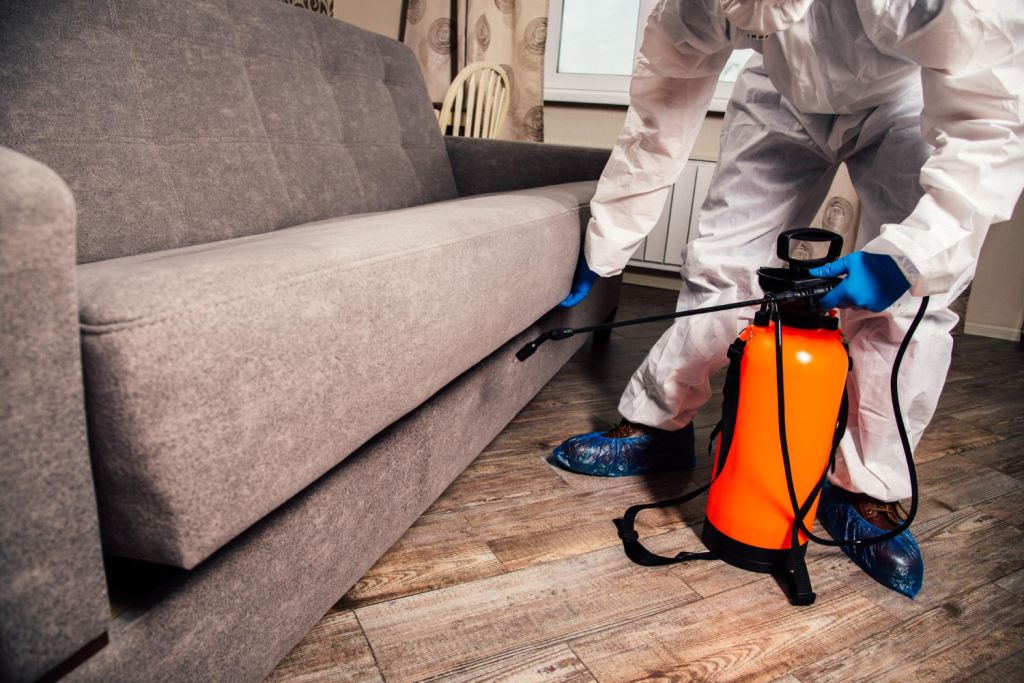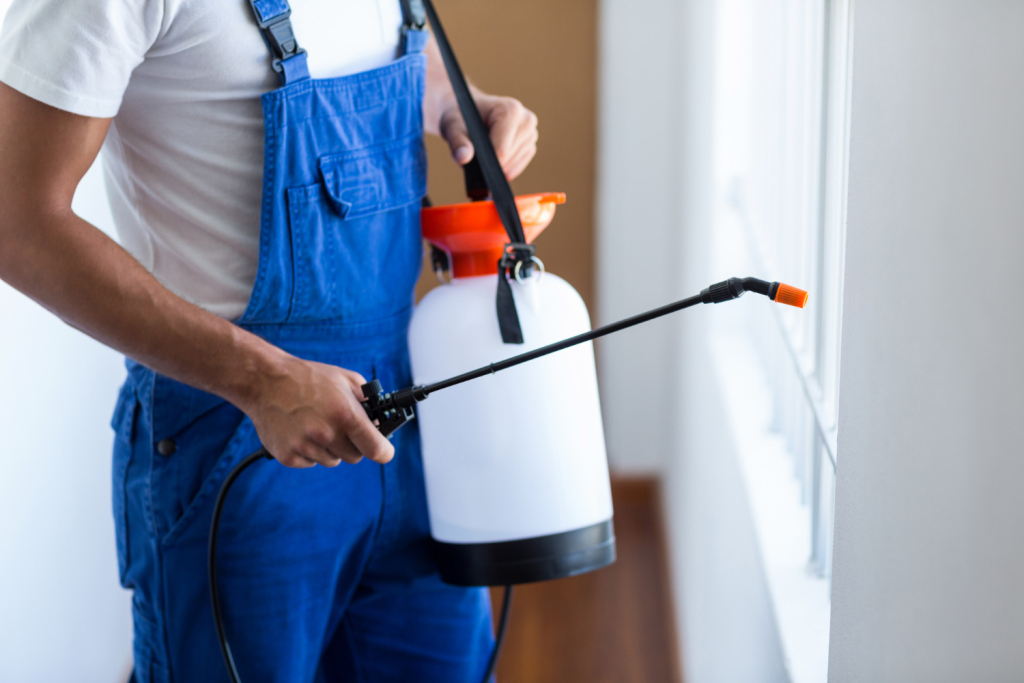Pest Control Checklist: A Guide to Pest Removal at Home

Pest control is a necessity if you don’t want to find yourself surrounded by pests in your home. In this checklist, we’ll run through the basics of what you should do to get rid of pests and why it’s important. If you’re looking for ways to improve the quality of life in your home, this list will help you cover all the bases.
The Most Common Types of Household Pests
When considering the purchase or sale of any real estate, it’s important to understand the types of pests that are prevalent at home. Here are some common household pests and some possible solutions on how to deal with them.
Bedbugs
Bedbugs, or Cimex lectularius, are reddish-brown insects about the size of an apple seed. These pests fall into the category of insects that live in wood and other structures and usually feed on human blood. This can cause itchy welts to appear on your skin, but these bites don’t pose any serious health risks.
Unlike ticks or mosquitoes, bedbugs don’t carry any diseases; they just want to feed off you while you sleep. Treating them involves getting rid of their hiding places by vacuuming upholstered furniture including mattresses, washing all clothing in hot water before wearing them again, and sealing cracks around windows with caulk. You’ll also have to wash all linens in hot water before washing them again normally—this will kill any nymphs that might be hiding there waiting to hatch.
Termites
Termites are social insects that live in colonies of several thousand individuals. They can cause damage to structures by feeding on wood and other cellulose-containing materials found in homes, such as cardboard boxes, furniture, paper products, and books.
Termite damage is often called “silent” because most homeowners don’t see termites until they have already caused extensive damage to walls, floors, and other structural components of a home. Termite control is essential for protecting your home from these destructive pests.
Flies
Flies are some of the most common types of pests in the home. They are often a sign of poor sanitation, and they can spread disease. Flies breed in animal feces, garbage, and other organic waste.
Flies can also be attracted to food that has not been properly stored or covered. To prevent flies from breeding in your home, keep all food covered with plastic wrap or lids whenever possible. Store pet food in tight containers so it doesn’t attract flies.
Cockroaches
Cockroaches are found in most parts of the world, and they are known to carry various diseases. They also leave behind their droppings, which can cause allergies or asthma in some people.
Cockroaches are very hardy creatures, so it is important to get rid of them quickly before they multiply and spread throughout your house. The best way to control these insect pests is by using a combination of different pest control methods:
- Use a cockroach bait station – these stations contain poison that will kill any cockroaches that feed on it. You will need several stations for large infestations.
- Use gels or sprays – these products contain insecticides that kill cockroaches on contact, but they need repeated applications because they don’t last very long.
- Set out sticky traps – these traps use bait that attracts cockroaches and then traps them inside when they try to eat it; this method works well if there aren’t too many cockroaches in your home
Spiders
Spiders are common pests in the home. They can be found in basements and attics, as well as on window sills and around door frames. Spiders are beneficial because they eat other insects, but they can cause some discomfort if they’re found in your home.
Spider bites can be extremely painful, but they don’t usually cause any long-term harm. Fortunately, most spiders are harmless to humans and their pets. However, there are a few species that produce venom that can cause symptoms ranging from mild pain and swelling to severe reactions that require immediate medical attention.
Rodents
Mice, rats, and other rodents cause damage to furniture, food, and anything else they can chew through or gnaw on. They also urinate and defecate in places where they live, which causes health issues for humans who have to clean up their messes. The most common types of rodents in the home are mice and rats, but squirrels can also be a problem.
Rats are bigger than mice and have longer tails. Rats often travel in groups, so if you see one rat, there might be more nearby. Mice are smaller than rats and usually travel alone. They do not have tails as long as a rat’s tail. Rats also have larger ears than mice do (and longer tails), but these differences aren’t always reliable for telling the difference between these two species.

Pest Management and Control at Home
Kitchen
Pests that are attracted to food are a common problem in kitchens. Food should be stored in airtight containers or placed in the refrigerator or freezer; otherwise, these pests will find it easy to chew through cardboard or plastic packaging and invade your home.
If you need to do a deep clean and have general pest control =of your kitchen, use a mixture of equal parts white vinegar and water in a spray bottle. Spray the mixture directly on surfaces and wipe them down with paper towels or rags. This will remove any grease or dirt from the surface, preventing pests from making homes there.
To further prevent pests in your kitchen, keep all food out of sight and inaccessible to them (especially pet food). When disposing of waste byproducts such as vegetable peelings, rinse down the sink before throwing away the scraps so that they don’t attract insects or rodents looking for somewhere new to call home.
Bedroom
Determine if you have bed bugs. Bed bugs are difficult to spot, so it’s important to do an inspection of the entire bedroom. Check for signs of bed bugs in your bedding, behind pictures and other items on the wall, and on window sills.
Remove clutter from your bedroom. Clutter provides hiding places for bed bugs, so eliminate as much clutter from your bedroom as possible. If you can’t get rid of all the clutter, move items that aren’t being used into storage areas and put them away until you’re done with your pest control treatment.
Vacuum all furniture in your bedroom, including headboards/footboards and box springs; under beds; around nightstands; behind dressers; inside closets; along baseboards; in corners behind baseboards; on top of curtains; behind picture frames; on lampshades, etc.
Living room
Remove pet food, water, and dishes. Pests such as mice are attracted to the smell of pet food, so make sure it’s stored in sealed containers at room temperature.
Use a vacuum to clean up pet hair and dust. Vacuums can also suck out bugs if you vacuum them up. This should be done often because pests such as mice like to nest in carpets (especially if they contain loose fibers) and wood floors are porous enough for insects like ants or termites to live inside them.
Clean up spills immediately with warm soapy water then rinse with clear water. Spills attract pests looking for something edible – especially sugar-based foods like candy bars or soda cans that have been left out overnight on counters tops using towels/rags instead of paper towels is another good way to keep bugs away from your home because they’re less likely than cotton terry cloths which come off easily after being drenched with liquids.
Bathroom
Keep the bathroom clean. This is the first line of defense against pests, as a dirty bathroom will attract bugs and other insects. Keep it dry. Make sure there are no leaks in the bathroom and repair them immediately if you find one, even if it means calling in a professional for help.
Use a dehumidifier to prevent mold and mildew from developing in your bathroom’s walls, flooring, and ceiling panels, which can lead to infestations by cockroaches or mosquitoes if they find their way into these damp spaces to breed. Also, use an exhaust fan when showering so that moisture doesn’t build up behind wall tiles or other elements of your home’s interior design scheme that could otherwise serve as hiding places for pesky critters such as termites or ants.

Outdoors
Keep the yard clean. Remove any clutter or debris and keep your lawn fertilized and watered. Cut back any trees or shrubs that are growing too close to the house, which can provide shelter for pests. You can also try biological pest control solutions but they are not advisable at home.
Keep grass mowed, especially around the foundation of your home where they may find their way inside if they have already entered it through some other opening in the exterior walls of your home.
You should also keep gutters clear of debris because this is a common place for rodents to build nests and start colonies inside your attic space as well as around electrical boxes and wiring within them, making them an easy target for insects such as ants or termites looking for food sources outside their nest location.
Eliminate pests before they have a chance to multiply: Try Pest Control Services
The best way to keep pests out of the home is to prevent and control pests infestations in the first place. Following this pest control checklist will help you do just that. Pest control services will also help you eliminate pests before they have a chance to multiply. Pests may spread diseases and can even cause allergies. To avoid all these problems, you may need to hire a professional pest control company from time to time.
As you can see, there are many pests that can be a problem in your home. They come in all shapes and sizes and they all have their own unique needs. The best way to know what kind of pest is living in your house is by doing an inspection.
Checking for signs of infestation and pest problems will help determine if you need professional pest control services or if it’s something that can be handled on your own with a little knowledge about how each type behaves and feeds itself.




